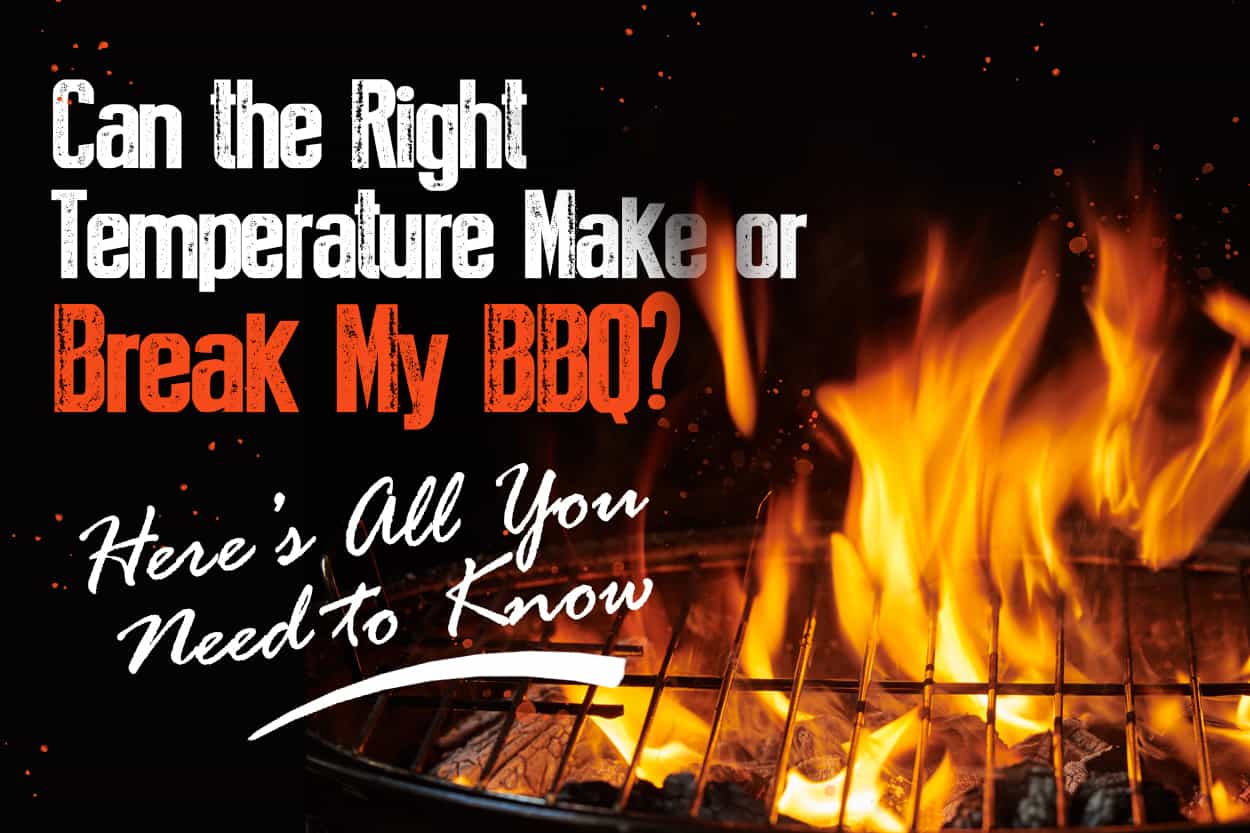
Can the Right Temperature Make or Break My BBQ? Here’s All You Need to Know
We often invest a lot of time grilling a piece of meat only to be disappointed by the end results. Sometimes it’s undercooked with way too much red that you’d like, and other times it gets overcooked and chewy. If you face this issue with your BBQ, let us assure you that you are not alone.
You need to get the meat to the right temperature to get the best flavor and a state-of-the-art texture. Not just that, raw or undercooked meat can make you ill, and overcooked or charred meat can ruin your appetite.
That’s why it’s essential to put a lot of time into learning about the meat temperatures and how vital is an instant-read meat thermometer to cook the ideal BBQ. Here are some tips from the experts that will make you a BBQ pro.
Table of Contents
Chicken
Overcooking can make your chicken dry and grainy. As unappealing as it would be, it is imperative never to eat your chicken undercooked. Raw chicken is full of bacteria that can lead to severe cases of food poisoning. Hence, it’s essential to cook the chicken through and through until you reach your desired cooked chicken temperature of around 165 degrees Fahrenheit (74 degrees Celsius).
If you are cooking a thick piece of whole chicken on the grill, you will need a probe thermometer. Check out some of the types of probe thermometers here. If you are grilling a batch of poultry, consider grilling thighs and legs first, and then add the breasts, so all of them are done simultaneously and turn out juicy and tender.

Beef
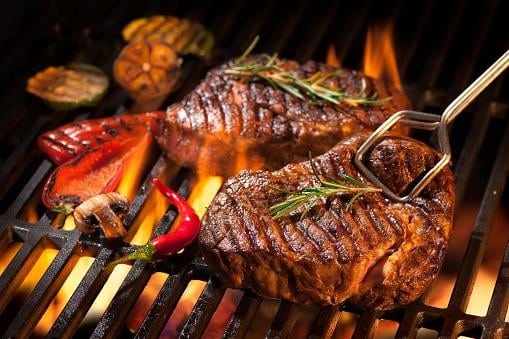
Compared to chicken, grilling beef can be relatively tricky. It is often consumed medium or rare, which can be difficult to get it right. For most types of cuts, the ideal temperature would be 160 degrees Fahrenheit (71 degrees Celsius). Anything below 145 degrees Fahrenheit (63 degrees Celsius) might be unsafe, so make sure that you avoid the danger zone. If you are new at this, make sure you refer to the steak temperature chart and use a meat thermometer.
Beef grilling temperature varies according to the cuts. Tougher cuts can get tender and fully cooked with slow cooking, while a tenderloin can be cooked fast over the high heat of the internal temperature that meets the requirements. If you are looking for a recipe for mouthwatering beef wellington, we can help you with that!
One suggestion for grilling beef is to let the meat rest for the same time it took to cook. In this way, the heat can spread throughout the meat, and all the interior parts can meet the right temperature. Following this tip also ensures no bleeding when you cut the meat.
Since beef is so tricky to cook, you need the best meat thermometer to check the temperature and get the perfect results. For those wondering how to use a meat thermometer, click here.
Fish
Fish can take a good amount of practice to get it right. Since it’s delicate and flaky, people are cautious and usually end up undercooking it. The recommended temperature is 145 degrees Fahrenheit (63 degrees Celsius) for most fish, so make sure you use a digital food thermometer to get it right.
Although it will take some practice, it’s not impossible to master the art. If you are cooking a salmon fillet, allow it to rest and then cut it open. Once you slice it, check whether or not it has reached the right temperature.
You need to be very careful with fish as overcooking will kill the taste, and all your hard work will go down the drain. Also, make sure it’s not undercooked as it can be harmful to children and pregnant women. Give your fish sufficient time on the grill at a smooth temperature to cook it perfectly.
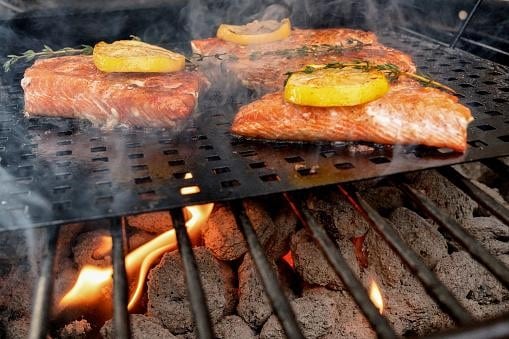
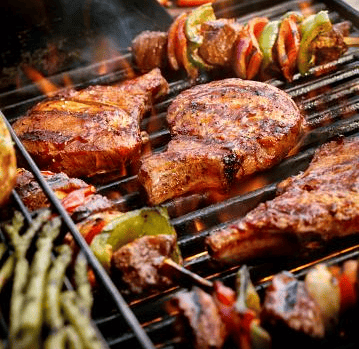
Cooking pork is no less than a challenge. The cuts like tenderloin medallions reach the right temperature very quickly, whereas it takes a very long time for a thick-cut pork chop to heat up. The minimum recommended temperature for pork is 145 degrees Fahrenheit (63 degrees Celsius) in most cases. If you are cooking a burger patty with ground pork, 160 degrees Fahrenheit (71 degrees Celsius) is your sweet spot.
Just like other meats, inserting your thermometer probe in the thickest part of the pork is the ideal way to ensure that you have an accurate temperature reading. Pork can be misleading; the outside will be perfectly cooked, and the meat inside will be raw if not given enough time to reach the external temperature. So, if you want to enjoy a juicy pork roast, a general thumb rule is to cook it 25 minutes per pound at 375 degrees Fahrenheit (191 degrees Celsius).
In this way, the cut will reach the correct internal temperature while ensuring it stays moist. Overcooking can become tough and chewy, so make sure you avoid that and monitor the temperature with an electronic meat thermometer. With this, you will easily know when the pork is done!
Conclusive Thoughts
The hazards of undercooked meat are not a fantasy; they are very real. You can get several health issues due to the consumption of undercooked meat. So, make sure you use an accurate kitchen thermometer. To avoid any accidents, make sure you take all the necessary precautions. Have a look at some of them here!
A probe thermometer is your best friend when grilling meat. It helps you monitor the temperature throughout and help you avoid the danger zones. If you need a thermometer for indoor and outdoor purposes, click here to find the best instant-read thermometer. Sure, it will take some time to master the art, but it will all be worth it when you cook decadent, scrumptious, perfectly cooked tender, and juicy pieces of meat every time.
One Comment
Comments are closed.
Discover Other ChefsTemp Products
Discover more recipes and learn kitchen tricks by joining our cooking family on Facebook.
You may also like:
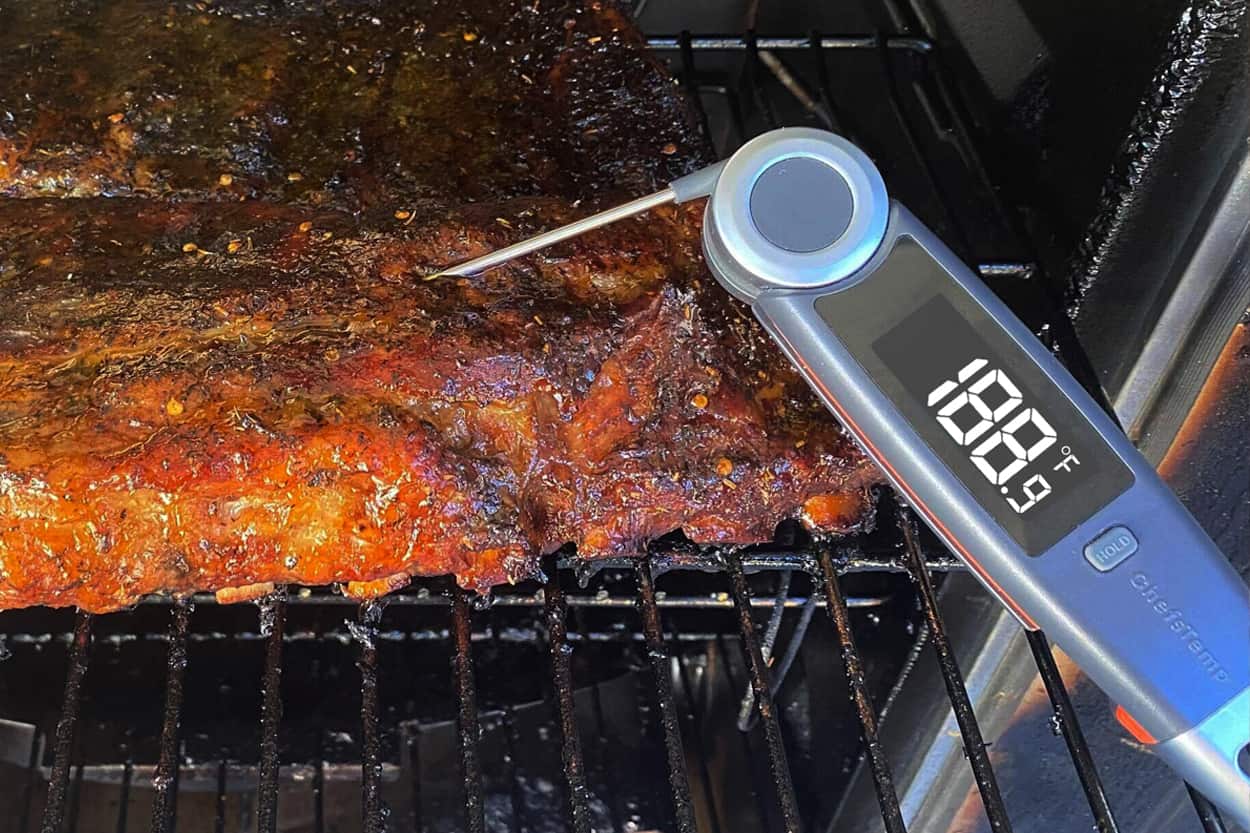
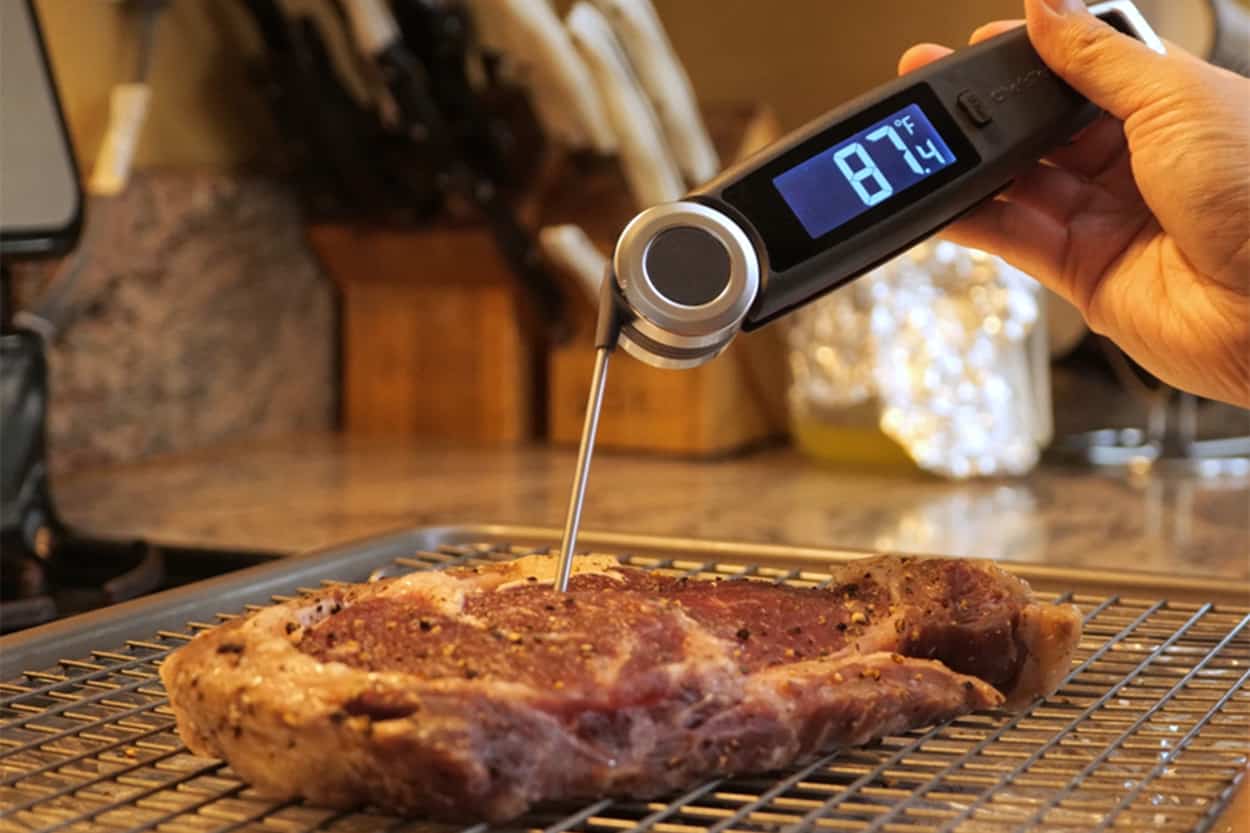
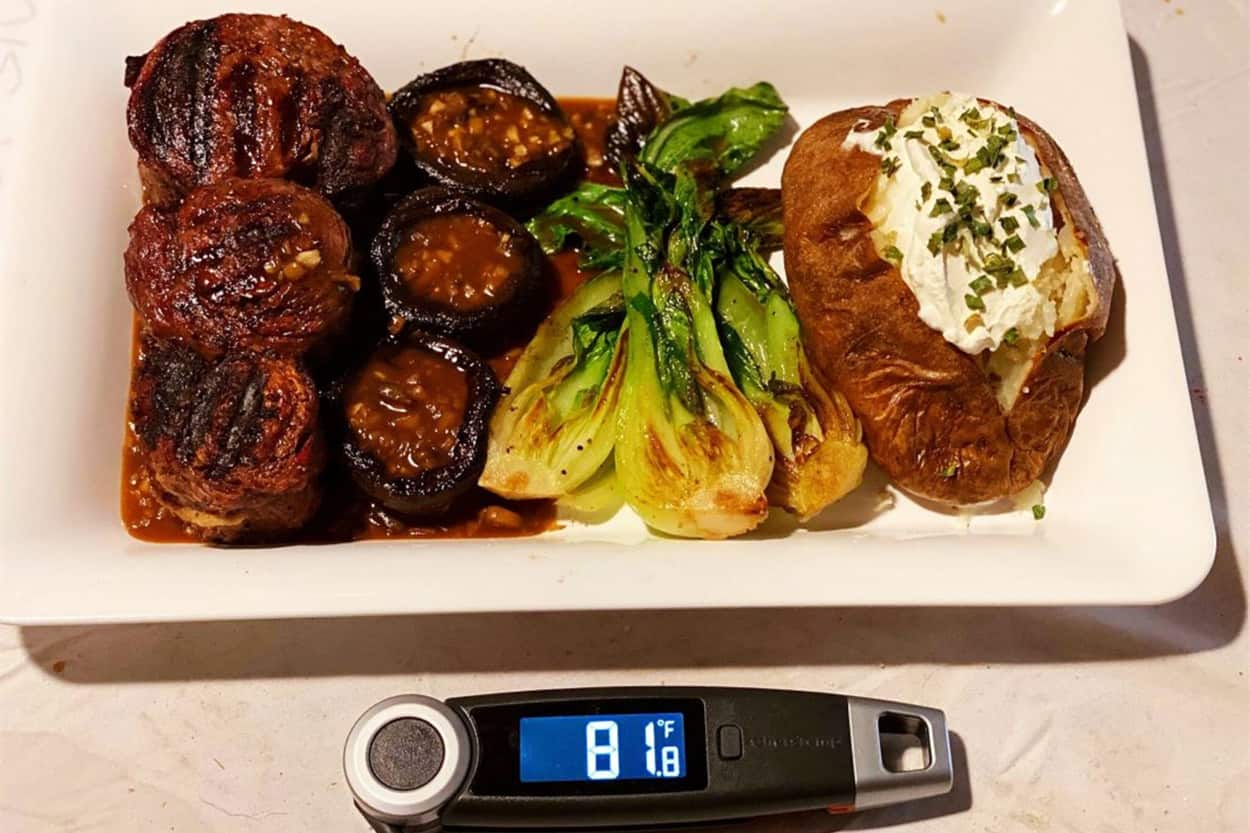
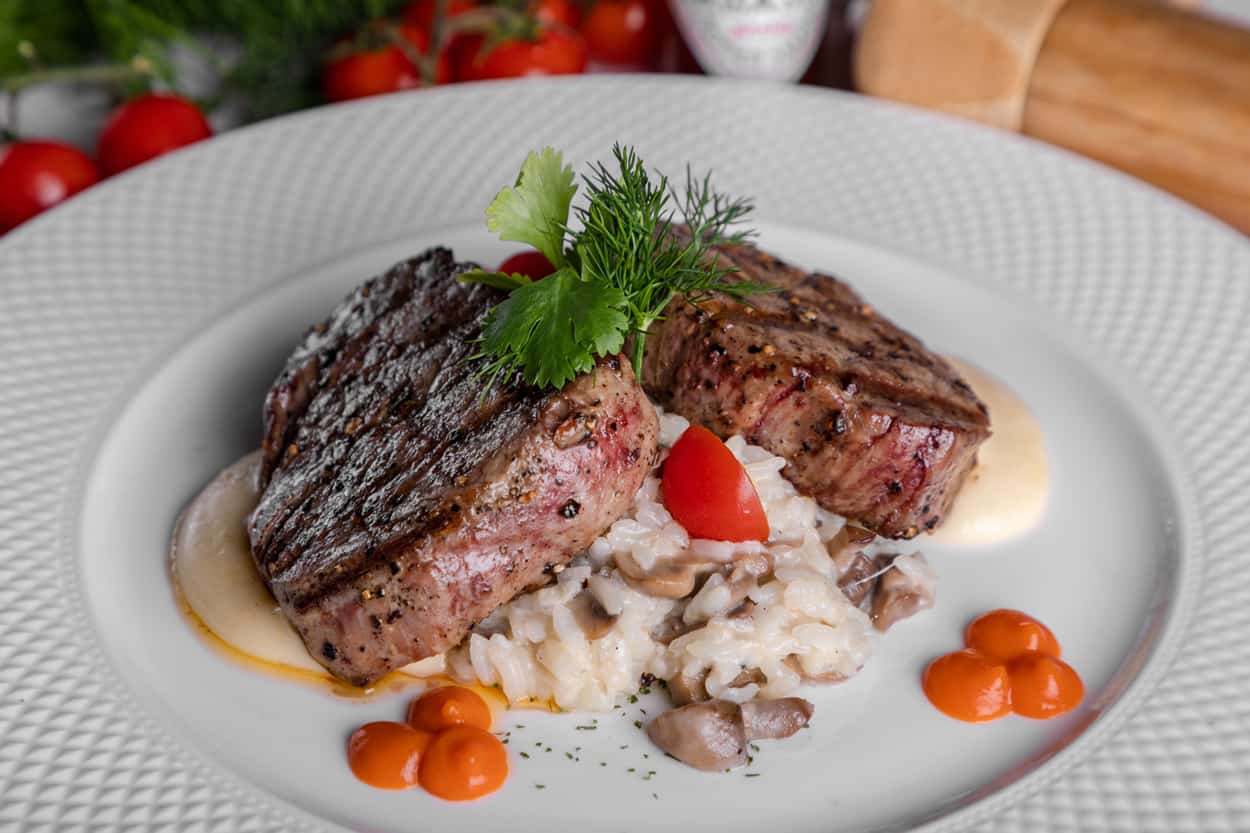









[…] While most grills on the market today come equipped with thermometers that measure the internal temperature of the grill, they are often inaccurate. An infrared thermometer will let you know if your grill is hot enough […]